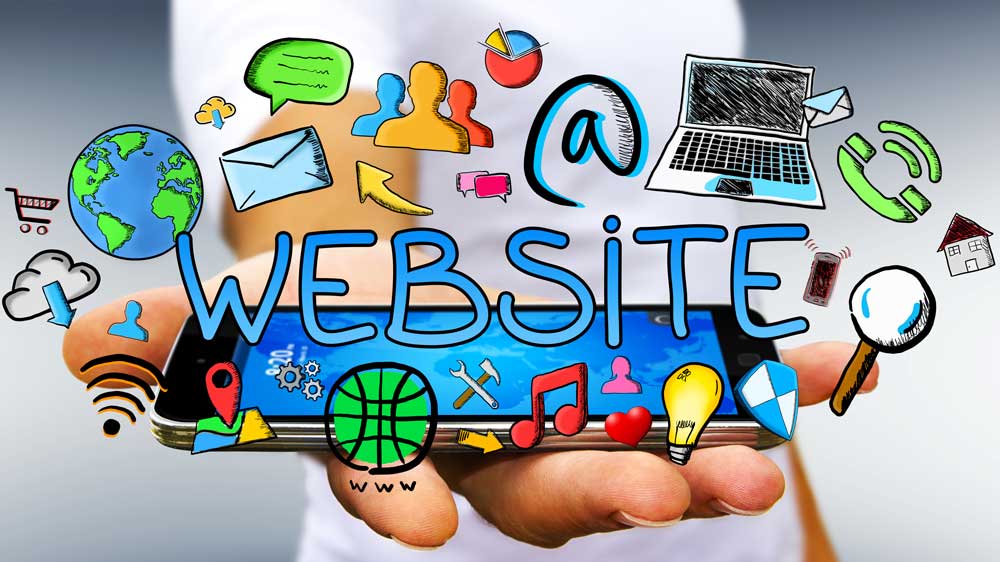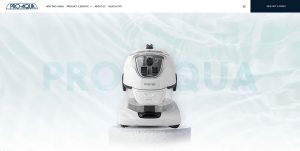It’s only natural that as e-commerce grows, so does the number of online shoppers worldwide. As of 2021, there are 2.14 billion digital buyers. This increase is also related to pandemic-related lockdowns and the inability to shop in physical stores.
Once restrictions are eased and life returns to normal, this is a trend that is unlikely to reverse. Because there are so many e-commerce websites out there, you want to be sure that yours is excellent at converting visitors into consumers.
Of course, this doesn’t indicate that your page must include all of the most updated e-commerce website features and trends, such as dynamic product search or 360-degree product previews. But as long as you have these must have eCommerce website features you can ensure client happiness and keep your company relevant and competitive.
Our List of Must Have eCommerce Website Features
To turn user visits into more sales, you must guarantee that your page includes the following must have eCommerce website features!
Related Items
Visitors will always find something new or something they need that you don’t sell, no matter how familiar they are with your business and items.
This is when the “Related Items” option makes a big difference. Simply saying “you might like this” might generate a serotonin spike, resulting in a stickiness effect that your e-commerce website lacks.
High-Resolution Videos and Photos
Buyers want to see the item from several angles, so eCommerce websites should present many photos per product. They want to be able to zoom in and get a feel for the product. In addition, the photographs must be high-resolution and load quickly.
Do keep in mind, however, that the image’s technical aspects are critical. Thirty-nine per cent of consumers abandon a website if the images do not load or take too long to load.
Product Filtering, Search, and Sorting
Allowing clients to refine their search using product filtering and sorting, product categories, and a smart search feature is the greatest approach to direct them to exactly what they want.
These are important tools that allow customers to manage their buying experience when combined with the product features listed above.
Product Recommendations
You should present your customers with products that are relevant to their purchase. You should asl present products that are relevant to their individual search and/or purchasing history. These suggestions are an excellent method to boost sales and promote client loyalty.
Wishlist
It’s possible that a visitor will come across your site before they’re ready to buy. You don’t want to ruin the possible sale just because they can’t save the items they want.
Helping them establish a wishlist allows them to bookmark a list of things that have caught their attention. This then makes it easily accessible for when they are ready to make a purchase.
Customer Logins
Customers can only use features like those listed above if they have a method to log in to your website.
Allowing consumers to create accounts provides you with the data you need on the backend to provide personalised suggestions. Personal accounts also create the possibility for your customers to revisit their stored items.
User Reviews/Proof
Potential customers are looking for information about other users’ experiences with your products because they can’t interact with them before buying.
Positive product reviews are one of the most effective marketing tactics you can use. These testimonials should be proudly featured on your product’s description page.
Special Offers
Most e-commerce businesses use special offers as part of their usual marketing strategies, such as social media, email, and text messages. The header area is used by e-commerce sites to promote unique offers.
When customers discover they’re receiving a good deal, they’re more likely to buy more and spend more time looking around the site.
It would increase sales if e-commerce businesses use continuing promotions and by creating a dedicated webpage that displays the deals.
Calls to Action
The insertion of clear and simple calls to action to the content of your website will lead to an increase in business. Simple button language like “Shop Now” or “Add to Cart” encourages people to take positive action.
It’s critical not to assume that users will take the desired activity. Remember to add calls to action on your homepage, too.
Frequently Asked Questions (FAQs)
Someone will always have a question, regardless of how well-designed your e-commerce site is. There are always some things you know customers will ask. They’ll always ask questions regarding popular products, delivery options if you have a physical location, or even how to place an order.
An FAQ section can benefit your consumers in obtaining the information they seek without having to wait for a response from customer support.
Contact Information
It’s also critical to have a clear option for clients to contact you directly, in addition to a strong FAQ section.
When the majority of your business is done online, nothing develops trust like an obvious way for customers to reach you, whether it’s through clearly displayed contact information, an online form, or even a chatbot.
Shipping Information
When a customer wants to make a purchase, one of the first things they’ll look for is shipping information. People want to know when their order will be delivered and how much it will cost.
This information should be available on your website in a few locations, such as in the cart and FAQs. If shipping is very complicated, consider devoting a separate page to this.
Trust Signals and Security Information
To ask clients to provide sensitive information like billing addresses and credit card numbers to complete a transaction is a big deal. Your potential consumers want to know that their information will be safe, especially if you’re a small business or dealing with a first-time purchase.
Adding a few trust signals to your website, particularly near the “Add to Cart” button, will comfort consumers that their information is protected and encourage them to complete the transaction.
Return Policy
Return policies are an important aspect of every e-commerce site. Your return policy should be well-written and noticeable.
It is another feature of internet selling that builds trust. It informs customers that if they are dissatisfied or require a new size, the company will assist them.
Mobile-Friendly Website
It doesn’t matter how good your content is or how great your items are if potential buyers can’t have access to it when they’re ready to buy.
People are increasingly using their phones to shop and make purchases. In fact, conversion rates on smartphones have increased by 64% compared to desktop conversion rates. This makes responsive e-commerce sites a viable design feature for better sales numbers.
Short Load Time
People have less than 15 seconds to decide whether they like or dislike your website. So don’t waste each second on a slow-loading site if you want customers to stay and buy your services or products.
We can help you implement these must have eCommerce website features!
To increase sales, your eCommerce website design does not have to be cutting-edge. The design of an eCommerce website should be easy to use, simple and intuitive.
And with these must have eCommerce website features, you’ll have no trouble converting potential consumers into raving fans! Need help getting these features on your site? Our team of expert web designers can help! We’re dedicated to offering a comprehensive range of digital marketing services to assist our clients to succeed. Contact us today to learn how we can help you grow your business online!




